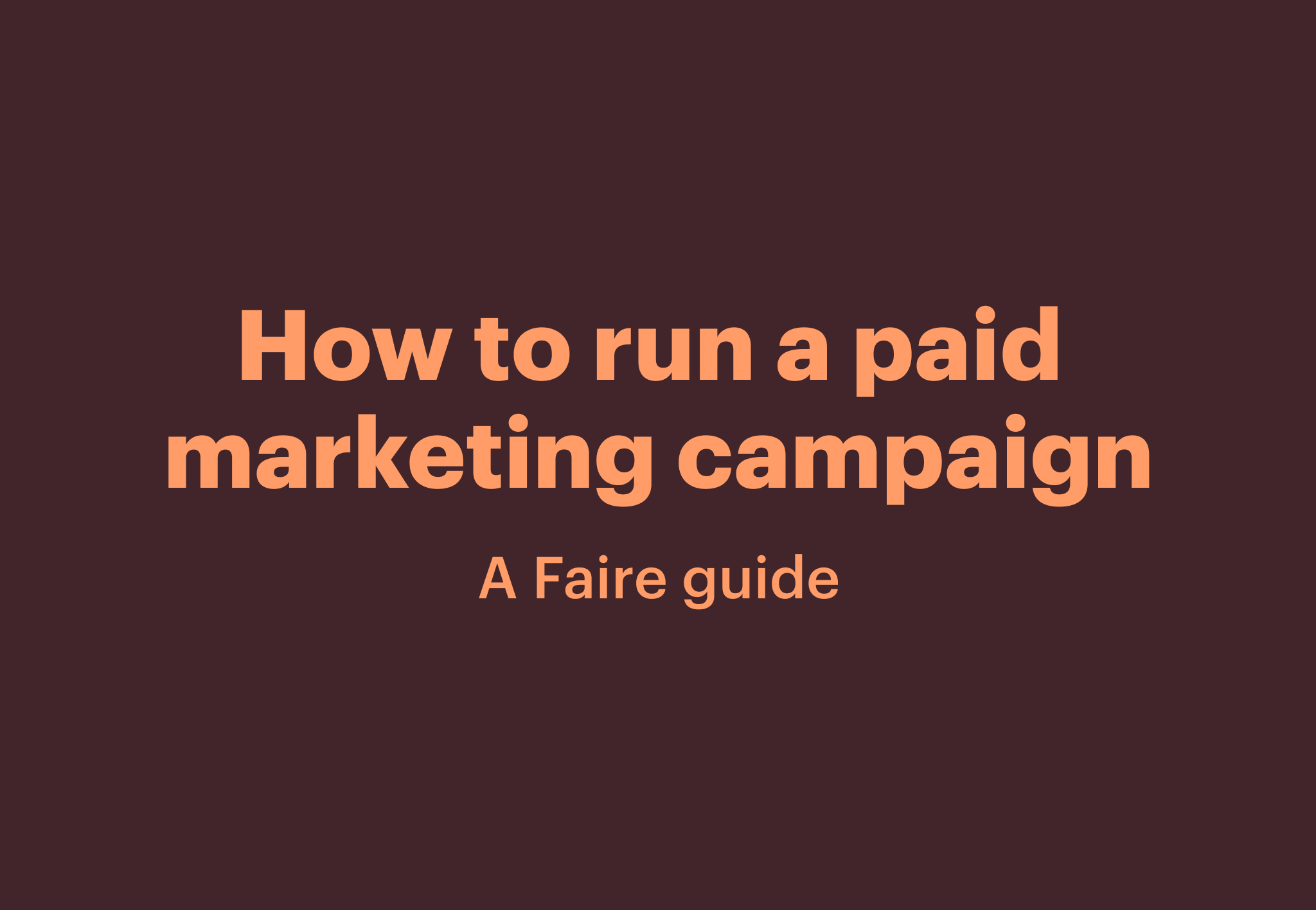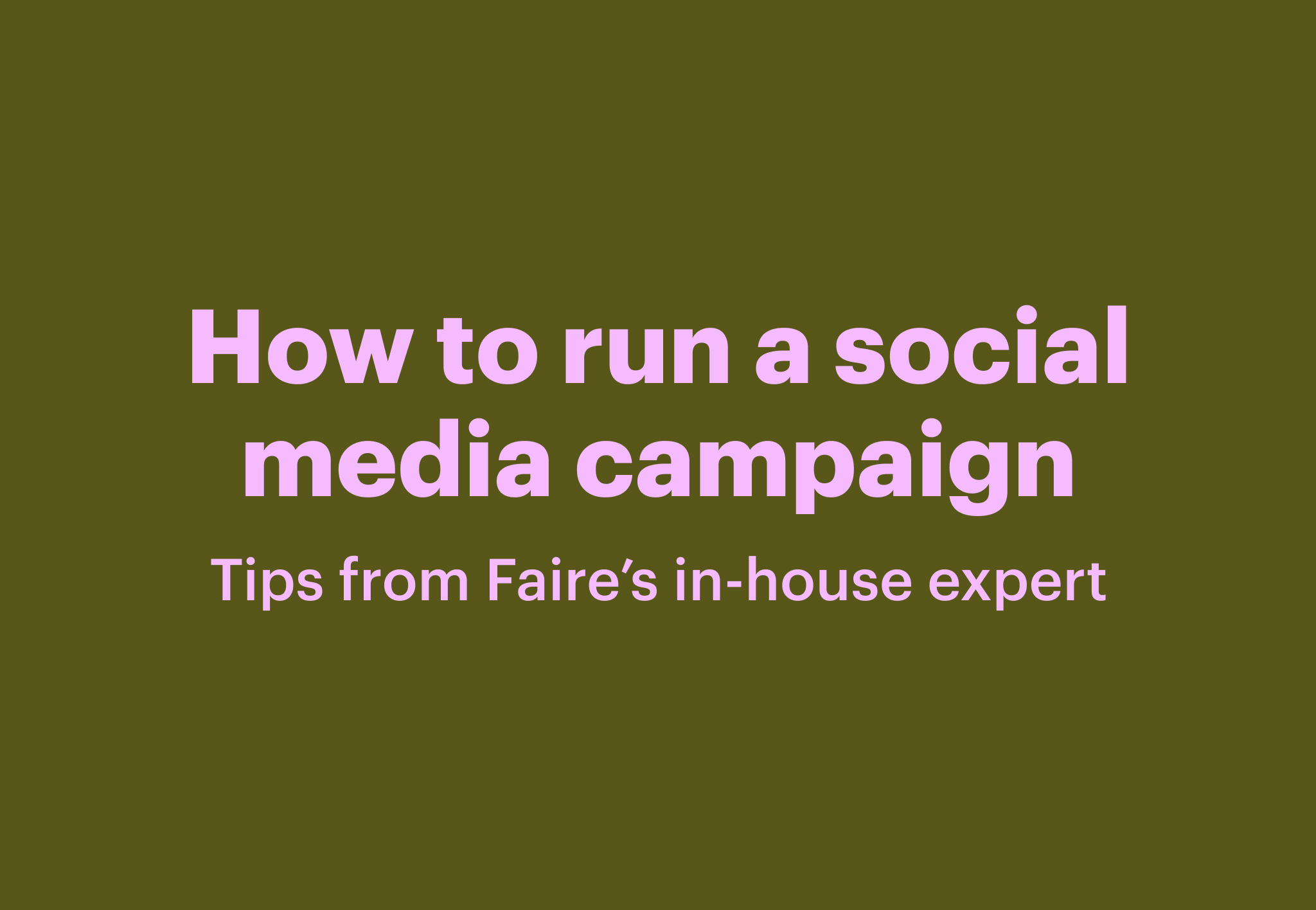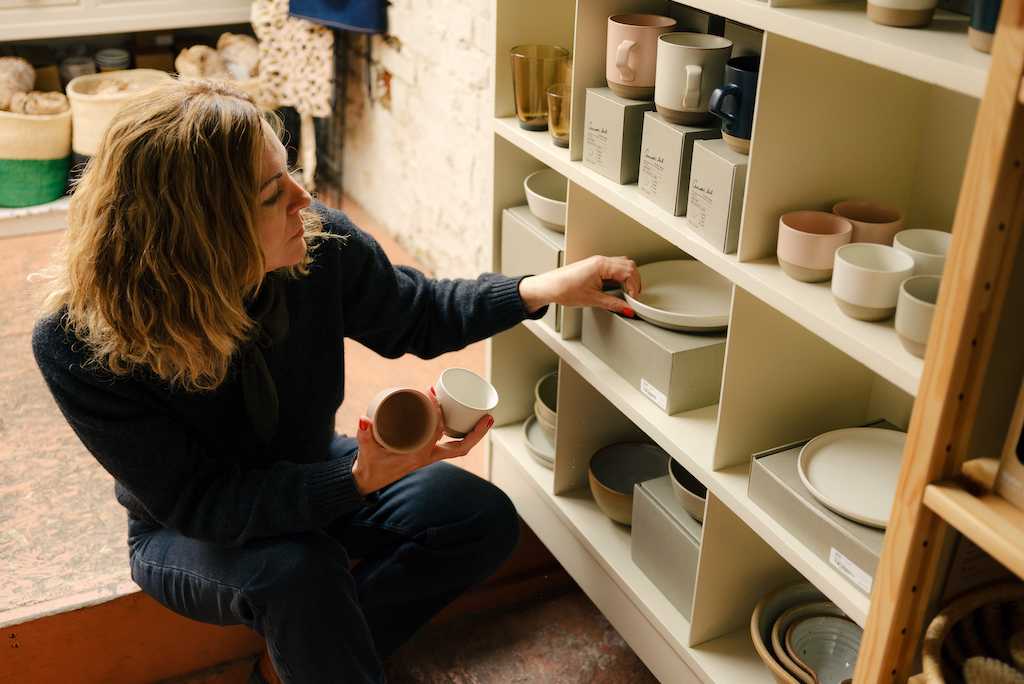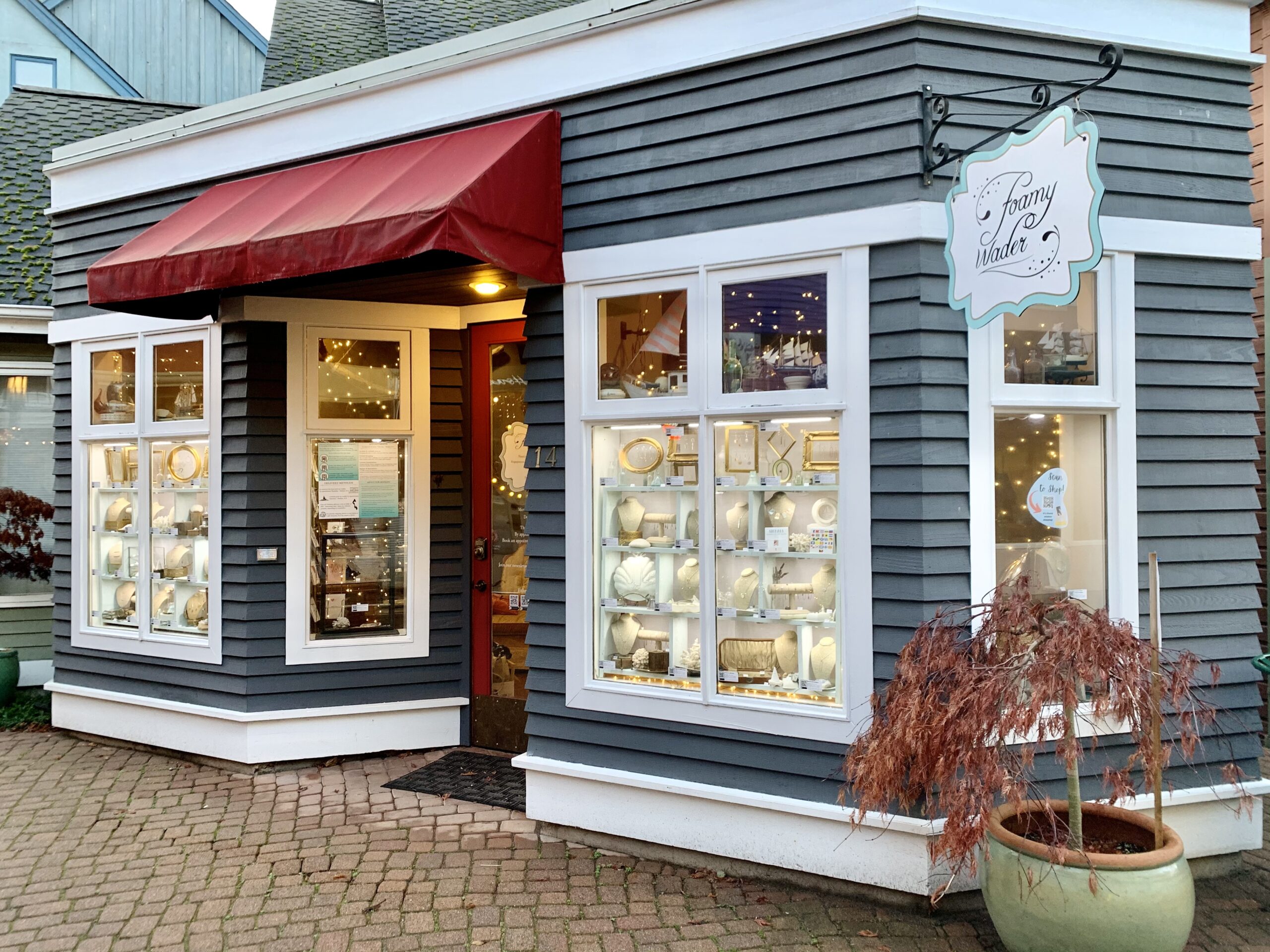
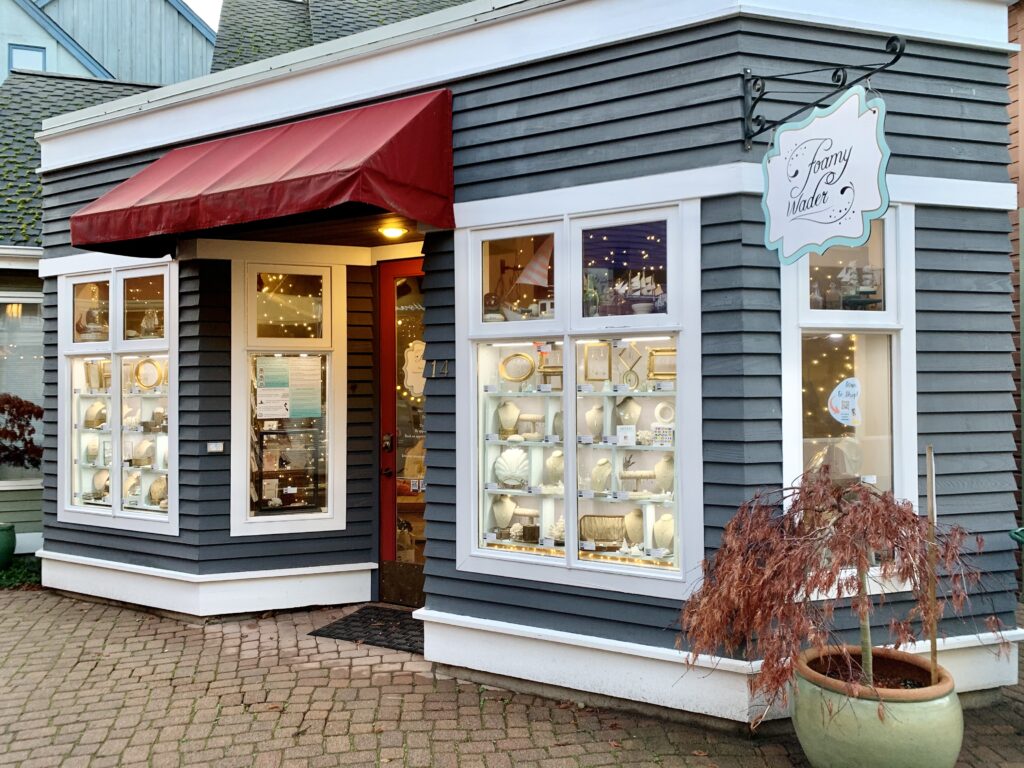
Running a small business means learning to expect—and accept—that the tide is always changing. For Alexa Allamano, artisan jeweler and owner of sustainable jewelry brand and retail storefront Foamy Wader, both her bespoke products and her business model embrace this ebb-and-flow nature.
Based an hour north of Seattle on Whidbey Island, Foamy Wader sells delicate jewelry for refined ocean lovers. Drawing inspiration from the colors, shapes, and textures of the seaside, Allamano crafts ethereal pieces that evoke the peaceful simplicity of wading at the shore. After closing Foamy Wader’s location in May 2020 due to the pandemic, Allamano went online only for several months before emerging stronger in a different retail location and growing the wholesale component of Foamy Wader.
By evolving and taking innovative approaches to running a small business, Allamano is leading Foamy Wader to success as a wholesale brand and as a brick-and-mortar retailer. We talked to Allamano about prioritizing sustainability, implementing virtual window-shopping, and establishing a physical presence to help your small business thrive.
Sustainability as a smart business practice
Making the shift toward more sustainable operations and mindsets is the new prerequisite for a successful business model. For Allamano, prioritizing sustainability in all aspects of her business has led to growth.
Allamano used the pandemic pause to take a step back and analyze how she wanted to run her business. For a long time, Foamy Wader offered customized sizing and made-to-order pieces, “but it was only something I did in person,” she says. She realized that incorporating customization into her website would help reduce waste and promote sustainability. Instead of adjusting and cutting up already made pieces, “we make things to order, so we’re not producing those little micro pieces of waste that add up,” says Allamano.
Ways Foamy Wader incorporates sustainability include:
- selecting eco-friendly recycled metals for jewelry
- using recyclable shipping materials
- streamlining packaging, such as printing a QR code directly onto shipping materials instead of an extra piece of paper that always gets thrown away
However, Allamano says, “the number-one thing that I do, which is sort of an outlier approach, is offer complimentary lifetime repairs.” This customer service model is not only a quality commitment but also a sustainable practice in reclaiming and restoring broken materials. “It’s extending the life of their jewelry and bringing them a satisfied experience while being responsible and not letting something go to the landfill,” explains Allamano. “And [customers] almost always buy something when they come back for a repair.”
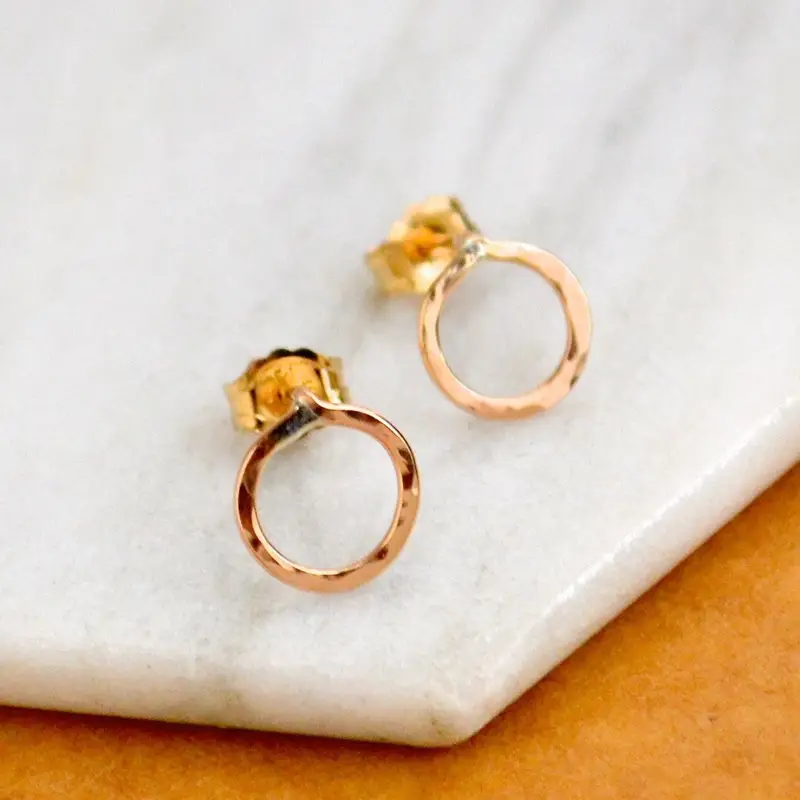
In the age of responsible consumerism, many shoppers are willing to pay more for sustainable products. When Allamano increased prices, “people didn’t mind because it was packaged in with everything we’re doing from a sustainability standpoint.”
Studies support Allamano’s experience. Astound Commerce’s recent Global Consumer Behavior Report noted that 68% of global consumers are willing to pay more for a sustainable product—with 65% saying they were even willing to pay up to 20% more.
By looking at individual purchases as micro investments in her business instead of a single transaction, Allamano has developed a loyal customer base who feel good about their purchase of sustainable and planet-conscious products and return again. “So many people are such dedicated customers, placing their 10th, 20th order,” she says. “They want to see my business succeed. It’s good for the planet, and it’s good for them.”
Making store windows shoppable from the street
When storefronts shuttered in the wake of the pandemic, many designated the beloved act of window-shopping as a bygone pastime. After closing her store and operating sales online for five months, Allamano wanted to re-establish Foamy Wader and opened a 180-square-foot location in fall 2020. In a light-bulb moment, Allamano saw a growth opportunity in her window displays and decided to pair her jewelry with a visible QR code for shoppers to scan, select their size, and purchase made-to-order pieces directly on her website. “Scan to shop is my method for capturing sales and leads through a system of QR codes marketed and displayed in my window display,” explains Allamano.
Every click you’re asking a customer to make is a drop-off point.
Alexa Allamano, owner, Foamy Wader
Virtual window-shopping taps into the convenience factor of online shopping and the reassurance factor of shopping in real life. A product is displayed next to a QR code that links to that product’s page on a website. You see the product, scan its QR code with your phone camera, and go directly to checkout.
Allamano understands that an easy, streamlined user experience is key to success. “Every click you’re asking a customer to make is a drop-off point,” she says. By eliminating the searching, typing, and navigating, customers go straight to checkout without any frustration.
Born out of COVID when everyone felt uncomfortable being in stores, Allamano’s approach was well received from the beginning. Being able to shop through the glass, see something you like, scan its QR code, and customize it to your size is perfect for getting people to shop from the street, explains Allamano. Making a purchase and committing without having to come into a store “and do any face-to-face interaction—they all love it,” says Allamano.
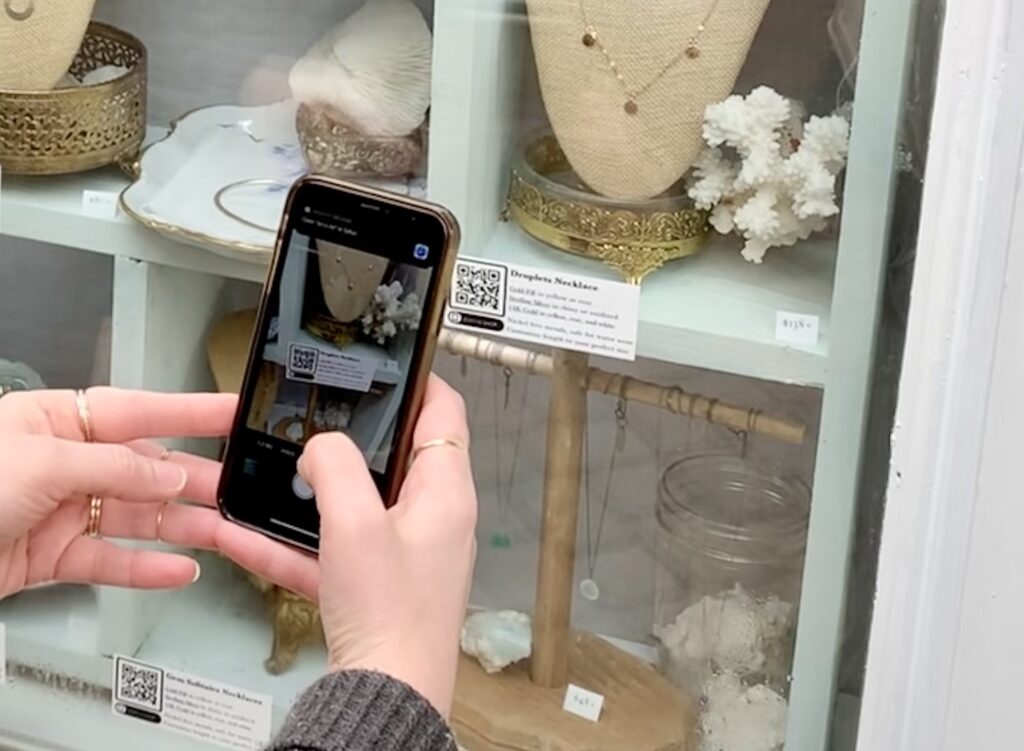
The impact of virtual window-shopping is tangible: Foamy Wader’s average order increased by 10% for online purchases and 19% for in-store purchases. Besides increasing sales, the scan-to-shop approach is an opportunity to engage potential customers. QR codes link to any digital application, so you can, for example, link them to an email sign-up form or your social media account. “It gets customers directly to one spot on the internet without having to do anything more than just aim a phone at it,” says Allamano.
The value of a physical space and presence
While an online presence is a key part of an overall retail strategy, there’s an inherent value to having a physical space in creating brand awareness and cultivating relationships with your consumers.
Allamano recalls that opening her first Foamy Wader location in 2014 was a necessary step to building her business. After outgrowing her home office and “hitting the ceiling,” Allamano realized she had to make a move into a bigger space for the health and vitality of her business.
If you sell direct to consumers or you sell wholesale and you use a space to fulfill, you should find a way to have some retail aspect to it.
Alexa Allamano, owner, Foamy Wader
Allowing her business to grow and expand naturally into a physical space is an approach that’s led to Allamano’s success. When her shop closed in May 2020, Allamano waited “until the right move manifested” and focused on her online shop. A spot opened up that fall, the 180-square-foot space where Foamy Wader’s fulfillment center is today. Business was thriving but with such a tiny space, “we were at a cap of how we grow retail and how we could continue to produce wholesale,” says Allamano. “To grow and scale, we needed more physical space,” and in summer 2022, Foamy Wader expanded into its second location, an 800-square-foot storefront that serves as a showroom.
With such individualized businesses, it’s hard to say what your business’s trigger will be that moves the needle for you to open a storefront. But Allamano believes having a retail aspect of your business is beneficial to your brand.
“If you sell direct to consumers or you sell wholesale and you use a space to fulfill, you should find a way to have some retail aspect to it,” she says. “You’re going to expand your presence and your visibility if you have a physical space that is accessible to the public.”

